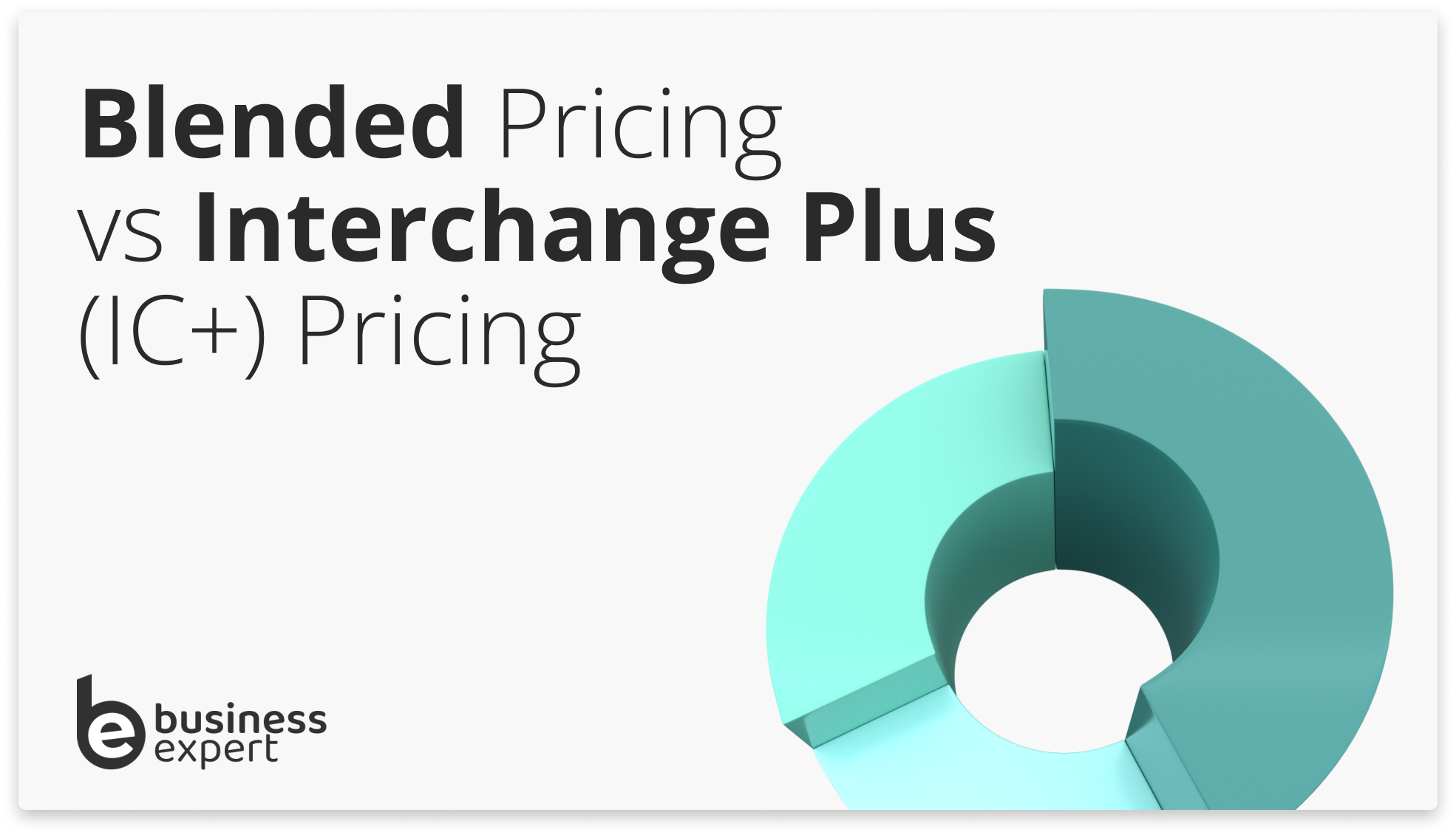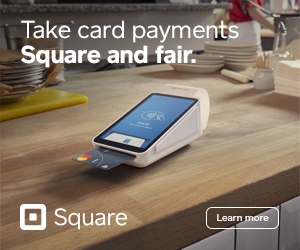When a customer uses a card machine, it starts a complex process. The transaction details go through the customer’s bank, the payment card network, and finally to the acquiring bank. Each of these parties may have their own charges, which are then passed on to the merchant.
As a merchant, you can choose several payments models as a means of paying for these charges, with two of the most common known as blended or interchange +.
Each model offers a different approach to handling card transaction charges, Blended offering one simple figure, with Interchange charging at a more granular level.
Below, we’ll break this down in some detail to help you choose the right option for your business.


What is Blended Pricing?
Blended pricing is a type of payment processing fee structure that charges merchants a simple fixed percentage of each transaction, regardless of the fees charged by card issuers. Basic card readers like Square, Zettle and Dojo offer it because their users want simplicity and fee transparency without signing up for a long-term contract.
Blended pricing can be simpler to understand and manage compared to the Interchange pricing model, which will charge you a different percentage depending on what method the customer uses to pay and other variables.

A blended pricing model includes all of the various fees within payment processing – individual interchange, card scheme, and processing fees – in one fixed figure.
Advantages of Blended Pricing:
- Ease of Use: Blended pricing simplifies payment processing by eliminating the need to track and analyze complex interchange fees.
- Predictable Costs: Merchants can confidently forecast their payment processing expenses, facilitating financial planning and budgeting.
- Potential Savings: For merchants with low transaction volumes or a consistent card mix, blended pricing can be more cost-effective than IC+ pricing.
Disadvantages of Blended Pricing:
- Limited Flexibility: Merchants have less flexibility to negotiate fee structures or adapt to changes in interchange fees.
- Potential for Higher Fees: For merchants with high transaction volumes or a predominantly premium card mix, blended pricing may result in higher overall costs compared to IC+ pricing.
- Lack of Transparency: Merchants cannot see the actual interchange fees being paid, potentially masking potential savings or cost inefficiencies.
What is Interchange Pricing?
Interchange pricing is a fee structure for credit card transactions where a merchant pays a fee that consists of the base cost set by the card networks (like Visa or Mastercard) plus a small markup added by their payment processor. This model is known for its transparency, as it clearly shows the base fee and the additional charge by the processor.
The interchange fee is determined by several factors, such as the type of card used (credit, debit, rewards), the transaction type (in-person, online), the merchant’s industry, and the pricing policies of the card networks. Additionally, risk factors such as transaction size and frequency may also influence the fee.
Interchange + vs. Interchange ++
Interchange pricing comes in two forms: Interchange +, with a base fee plus a processor’s markup, and Interchange ++, which further breaks down fees, including card network charges. Choose Interchange + for simplicity and transparency or Interchange ++ for more detailed insights into each fee component, especially beneficial for high-volume transactions.
Advantages of IC Pricing:
- Transparency: Merchants have complete visibility into the true cost of their transactions, including the actual interchange fees and the markup percentage.
- Cost Optimization: Merchants with high transaction volumes can potentially save money by only paying the actual interchange fees, without the markup of blended pricing.
- Tariff Control: Merchants may have more control over their tariffs, as they can negotiate the markup percentage with the payment processor.
Disadvantages of IC Pricing:
- Complexity: Merchants may need to track and manage interchange fees separately, which can be more complex compared to blended pricing.
- Potential for Higher Fees: If interchange fees increase, merchants’ costs may also increase under IC+ pricing.
- Minimum Fees: Some IC+ pricing plans may have higher minimum fees than blended pricing plans.
Is Blended Pricing or Interchange Better?
Blended pricing (meaning a fixed percentage) is most suitable for businesses looking for simplicity and certainty. Companies with lower transaction volumes may find the predictable, all-inclusive rates of something like Square or Zettle easier to manage. The ease of onboarding and competitive prices make this option even more attractive.
For businesses with higher transaction volumes or more complex needs, you’ll want to use Interchange Plus or ++. The rates come down from 1.5% to as low as 0.4% for certain types of transactions, meaning there’s a huge cost saving. Of course, you’ll need to be on a long-term contract to get this and have a decent turnover.
FAQs on Blended Pricing vs IC
Can I Switch from a Blended Pricing to Interchange Plus Pricing, or Vice Versa?
Yes, it is generally possible to switch from a different pricing model to blended pricing. Still, the process may vary depending on your payment processor and the terms of your existing agreement.
How Often Should I Review and Adjust My Blended Rates or Interchange Plus Pricing?
The frequency at which you should review and adjust your pricing model can depend on several factors, including
- Sales volume, seasonality and transaction patterns
- Industry changes, including regulatory changes, new technologies or interchange fees
- Cost-benefit analysis
- Technology advances in payment processing
- Contract terms, including fixed-rate periods
How does Blending Pricing and Interchange Plus Pricing Handle International Transactions?
Blended Pricing combines all fees into one higher rate for international transactions, while Interchange Plus Pricing separates and details actual fees, which may vary for international transactions.
How Does Blended Pricing and IC+ Pricing Handle Chargebacks?
Blended and interchange plus pricing generally don’t handle chargebacks differently from other pricing models.

